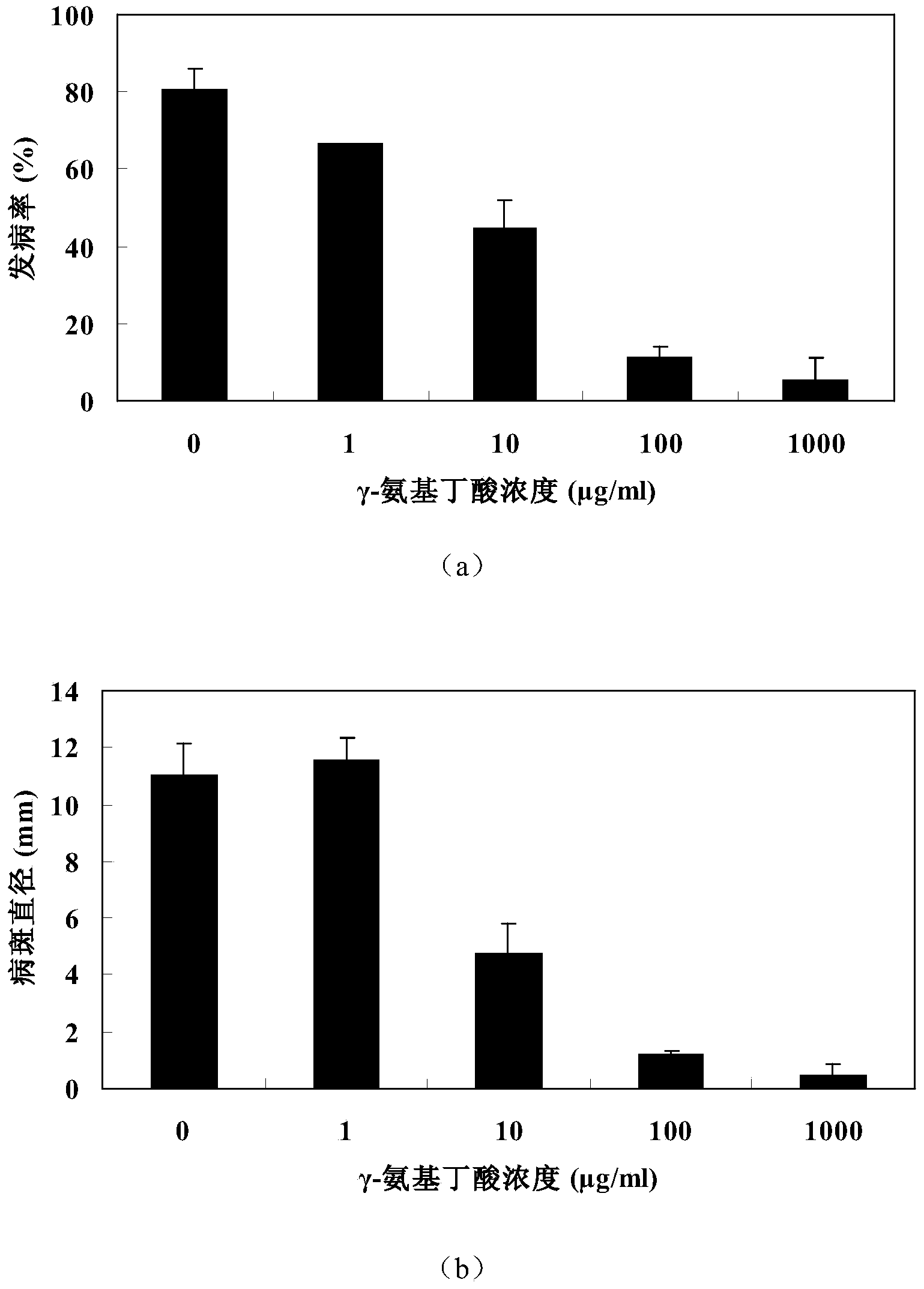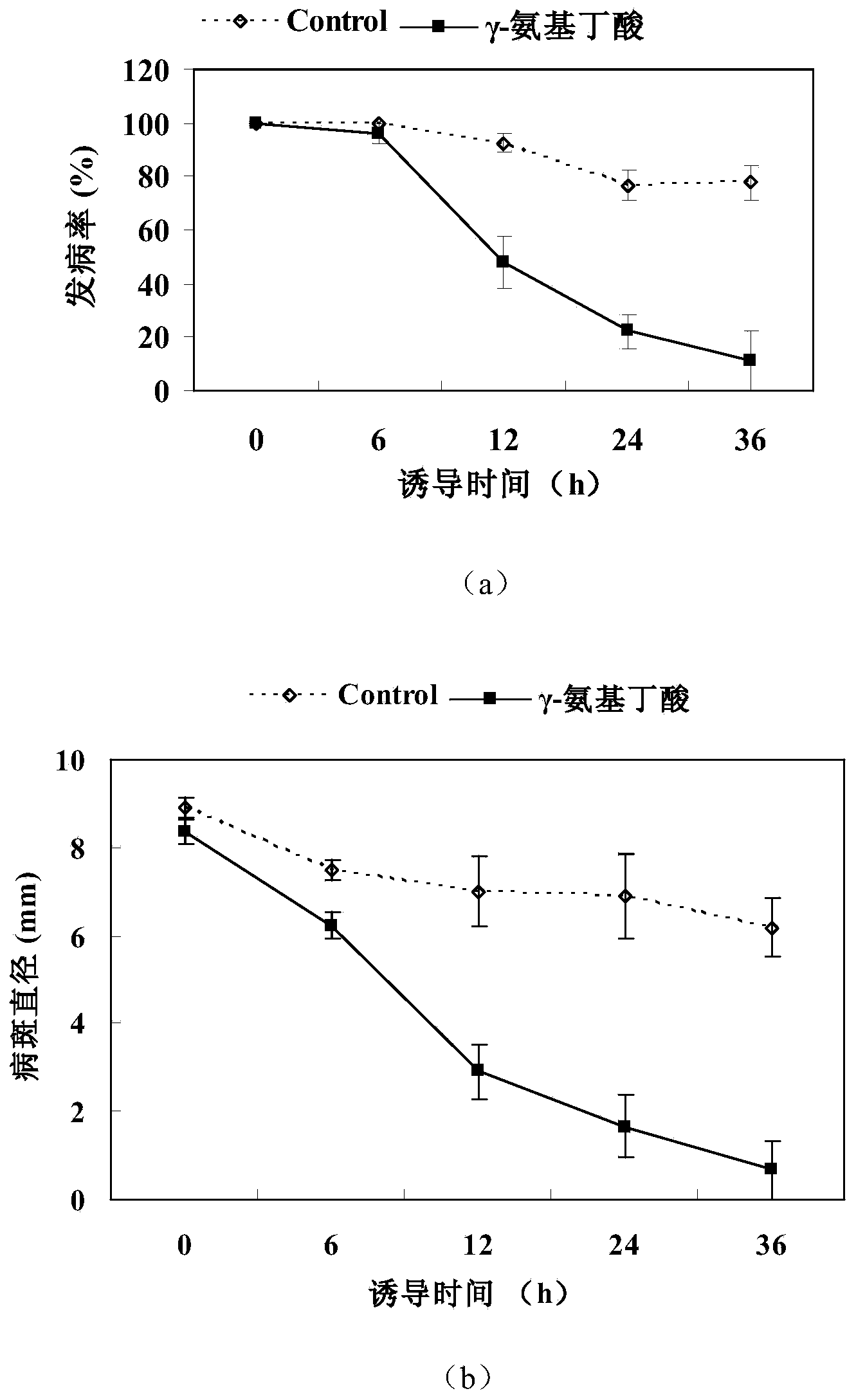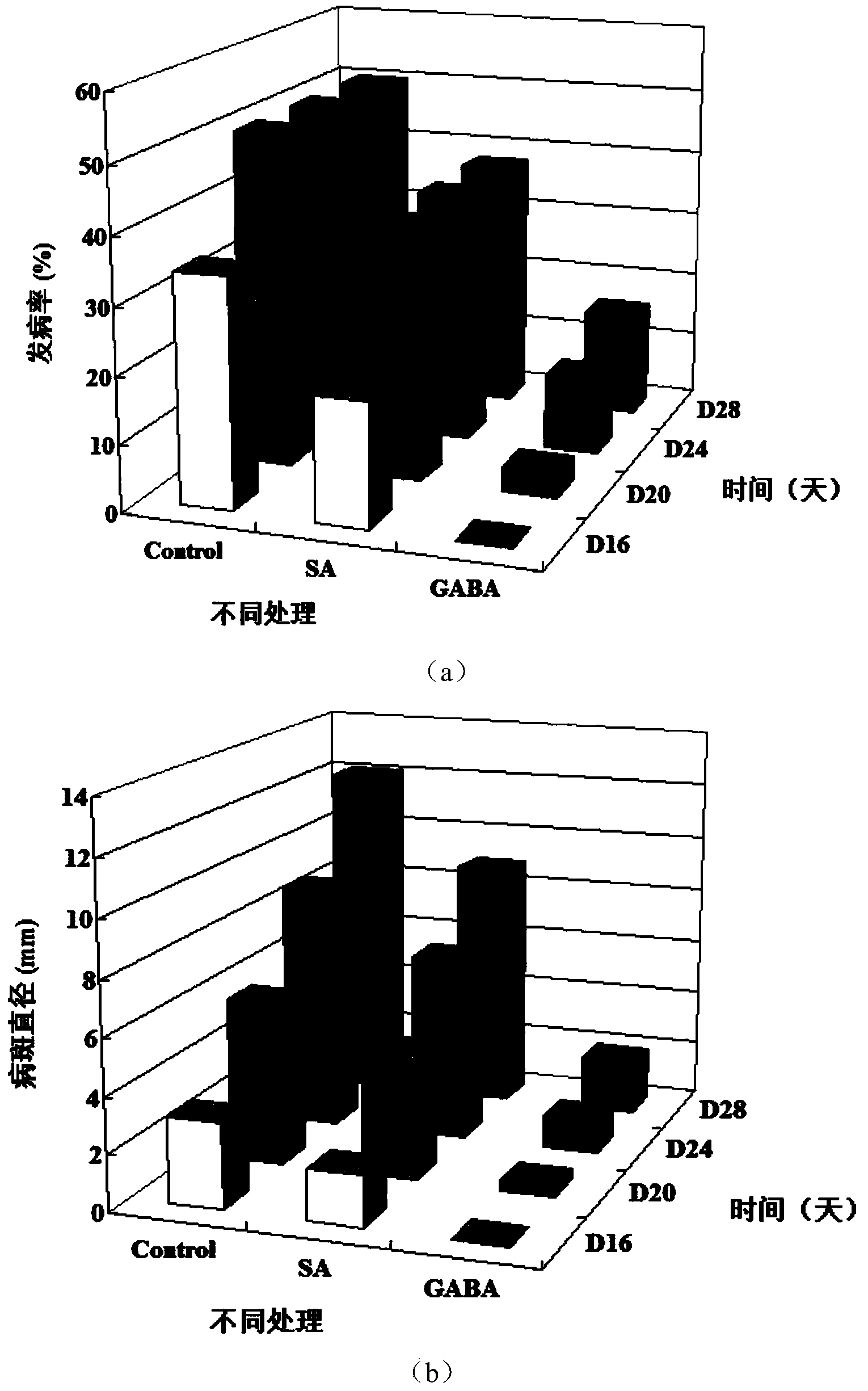Preparation for inducing fruit resistance for controlling diseases and using method thereof
A fruit and disease technology, applied in the field of biological preservation, can solve the problems of increased residual levels of chemical fungicides, toxic and side effects of chemical fungicides, drug-resistant pathogens, etc., and achieves the effects of low product cost, ensuring food safety, and reducing rot.
- Summary
- Abstract
- Description
- Claims
- Application Information
AI Technical Summary
Problems solved by technology
Method used
Image
Examples
Embodiment 1
[0077] Change (2) of the processing step in Experiment 1.1 to the following:
[0078] Pear fruits were soaked in 10μg / ml, 100μg / ml, and 1000μg / ml γ-aminobutyric acid for 10 minutes to dry naturally, using sterile water as a control, and then kept at 25°C under constant temperature and humidity conditions (relative humidity 90%) After 24 hours of induction, wounds of uniform size were formed on the surface of each fruit with a sterile punch.
[0079] The rest of the content is the same as experiment 1.1.
[0080] The effect of γ-aminobutyric acid whole fruit treatment on the resistance of pear fruit to blue mold is shown in Table 2 below.
[0081] Table 2. The effect of γ-aminobutyric acid whole fruit treatment on pear fruit resistance (the detection time is the fifth day)
[0082] Processing number
[0083]As shown in Table 2, the incidence of disease after γ-aminobutyric acid 100 μg / ml whole fruit treatment was also reduced by about 22% compared with the control. ...
Embodiment 2
[0087] Change (2) of the processing step of Experiment 2 to the following:
[0088] Loquats were soaked in 1 μg / ml, 10 μg / ml, 100 μg / ml, and 1000 μg / ml GABA solutions for 10 minutes to dry naturally, and sterile water was used as a control. %), 24 hours after induction, wounds of uniform size were formed on the surface of each fruit with a sterilized punch.
[0089] The effect of γ-aminobutyric acid whole fruit treatment on the anthracnose resistance of loquat fruit is shown in Table 3.
[0090] Table 3. The effect of different induction concentrations of γ-aminobutyric acid on the anthracnose resistance of loquat fruit (the detection time is the 6th day)
[0091]
[0092] Results: As shown in Table 3, whole fruit treatment with different concentrations of γ-aminobutyric acid could inhibit the postharvest anthracnose disease of loquat fruit to a certain extent. It can also be seen from the results of the whole fruit treatment that on the 6th day, only the concentration of...
Embodiment 3
[0096] Embodiment 3, the impact of gamma-aminobutyric acid on the resistance of citrus fruit green mold disease
[0097] 1. Experimental materials:
[0098] The fruit is citrus, the variety is mid-late ripening Miyagawa tangerine, and the place of origin is Lishang Village, Tashan Township, Chun'an County, Zhejiang Province.
[0099] Pathogen: Penicillium digitatum, activated for 7 days at 25°C for later use.
[0100] 2. Processing:
[0101] 2.1 Preharvest treatment:
[0102] The following three treatments were set up in the preharvest test:
[0103] 1) Blank control, that is, water treatment control.
[0104] 2) γ-aminobutyric acid treatment: the concentration of γ-aminobutyric acid in each liter of preparation is 100 μg / ml. 48 hours before the fruit is picked, the preparation solution is evenly sprayed on the surface of the fruit until the surface of the fruit is wet. Harvest two days later and pack the fruit with plastic wrap for later use.
[0105] 2.2 Whole fruit p...
PUM
 Login to View More
Login to View More Abstract
Description
Claims
Application Information
 Login to View More
Login to View More - R&D
- Intellectual Property
- Life Sciences
- Materials
- Tech Scout
- Unparalleled Data Quality
- Higher Quality Content
- 60% Fewer Hallucinations
Browse by: Latest US Patents, China's latest patents, Technical Efficacy Thesaurus, Application Domain, Technology Topic, Popular Technical Reports.
© 2025 PatSnap. All rights reserved.Legal|Privacy policy|Modern Slavery Act Transparency Statement|Sitemap|About US| Contact US: help@patsnap.com



